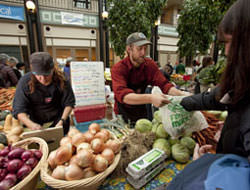|
Applications for the 2010 USDA/1890 National Scholars Program are now being accepted. Aspiring high school seniors and rising college sophomores and juniors are encouraged to apply before the Feb. 1, 2010, deadline.
The scholarship program is a partnership initiative between USDA and the 1890 Land-Grant Universities and Tuskegee University. It is designed to expand diversity in USDA through the recruitment of talented students into public service in agriculture and related fields, including food sciences, natural resource sciences and agricultural sciences.
“This program furthers the Obama administration’s goal of promoting and encouraging America’s young men and women to consider careers in agriculture and public service,” says Agriculture Secretary Tom Vilsack. “Under this terrific partnership, college-bound students benefit from an outstanding educational opportunity, and USDA benefits from the knowledge, talent, diversity and skills that they will one day bring to our organization.”
Since the inception of the National Scholars Program in 1992, USDA has funded scholarships for more than 500 students. The scholarship recipients receive full tuition, fees, books, use of laptop computers and printers, software, employment and employee benefits for each of the four years they pursue a bachelor’s degree. For each year of the scholarship, students receive room and board provided by the partnering institutions.
Through this partnership, USDA also hires these graduates into career positions. Students are required to work one year at USDA for each year of their scholarship.
The mission of the land-grant system is to teach, conduct research and provide outreach. The system was initiated by President Abraham Lincoln with the passing of the Morrill Act of 1862. A second Morrill Act was passed in 1890 to grant freed slaves and African Americans access to land-grant institutions in southern states. The passage of this bill brought educational opportunities in technical, military and agricultural sciences to the general working class population who had no other access to higher levels of learning.
The USDA selects scholars based on recommendations of participating 1890 Land-Grant Institutions and Tuskegee University.
For more information about the USDA/1890 National Scholars Program, visit the program website or click here to download an application.
















